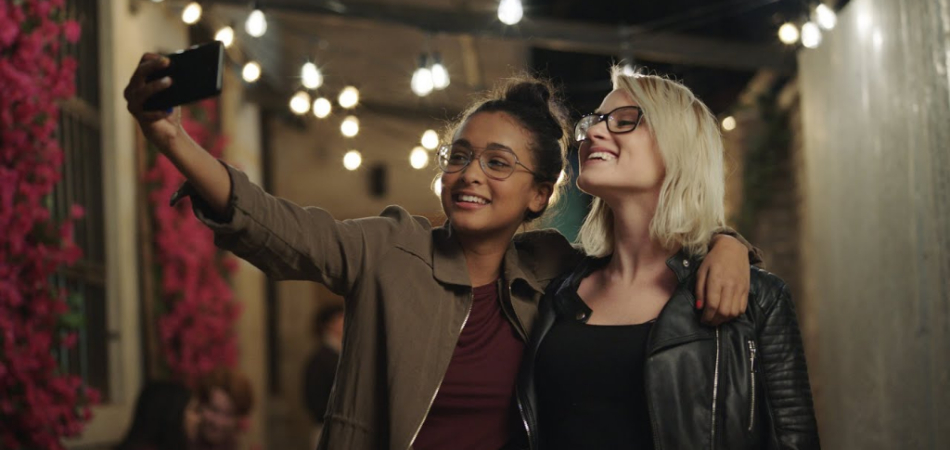
Using AI in design to disrupt conventions
How can we use AI to ensure that the design work we produce stands out, rather than blend into a sea of conventionality?
Brands aren’t human and the relationship metaphor is wildly overstated. Still, the ones that are winning finding ways to reveal the raw humanity that they contain within and in the customers that they serve.


When you pause over a tweet or a post and instead send it in a text message, you are wrestling with context. In ‘Self-Disclosure in Social Media’ (2014) Natalya N. Bazarova and Yoon Hyung Choi write about a phenomenon called context collapse:
‘People from different social circles and life experiences are collapsed into one network. Such audience diversity complicates self-presentation and disclosure because people have to address different audience values simultaneously’
Until very recently we humans mostly lacked access to channels that broadcast to the world. Social media create opportunities for self-disclosure that are liberating for some and inhibiting for others. Many fall back on tactics for revelation with lower perceived risk – sharing the article they agree with (‘This!’) rather than their personal opinion, perfecting their selfie face. Context collapse poses a challenge - how to be ourselves when our audiences are more varied than we’re comfortable with.
For brand owners, context collapse is just as much of challenge. Brands are a façade, even those that are deeply representative of corporate culture. “Let's encourage every customer to spend an additional 50p during each shopping trip between now and the year-end,” said a sign in a Sainsbury's branch in Stratford, London, aimed solely at staff. A customer saw it, snapped it and shared it. "Let’s encourage every one of our lovely customers to save as many 50ps as possible" said the Lidl poster in response. Context isn’t dead, it’s just more complicated to navigate.
We can neither go back into our shells nor can we sustain a perfectly curated public self. The answer is to explore and experiment individually and collectively with as many different ways of being ordinary and open, imperfect and vulnerable as we can. LinkedIn encourages companies to participate in ‘Bring your parents to work day’ (parents know how to collapse a context). Nike is descending from the heights of galactico-land to the gritty streets of London. KFC emerged in triumph from a very public misstep with their FCK apology ad. Brands aren’t human and the relationship metaphor is wildly overstated. Still, the ones that are winning finding ways to reveal the raw humanity that they contain within and in the customers that they serve.

LinkedIn is the world’s largest professional social network. Looked at from a brand life cycle perspective, early warning signals flashed - confusion existed in how members think of LinkedIn and how they use it; tracking metrics for their engaged members were static. In fact, the LinkedIn brand was at an inflection point. Attracting new audiences demanded an evolution in brand behaviour and tone.
We interviewed 4000 professionals across the US, UK, Germany and India. How is LinkedIn currently perceived? How should LinkedIn clearly and distinctly communicate as a brand? We explored basic values, a key component of global cross- cultural research programmes. We profiled users ‘cognitive style’ on a range of key behavioural and psychological metrics. We looked at competitor brands and exemplar brands in other sectors.
The LinkedIn brand and experience works well for a specific part of the existing user base, a confident elite of strivers and senior leaders. Specifically, people who value power, achievement and conformity, those who score themselves highly on appetite for risk and feel a strong sense of personal agency. All of these psychological traits correlate with higher engagement on LinkedIn and a higher sense of belonging.
LinkedIn’s primary growth audience are 25-35 year old career builders. Many are technically members of LinkedIn but barely visit and the brand holds no promise for them. Our research showed that the limited resonance and perceived utility has roots that run deep. Career builders associate LinkedIn with power, achievement and conformity but this puts the brand drastically at odds with their own values – self-direction, autonomy, creativity, being part of something greater than themselves, helpfulness in big and small ways. Few of these people are buccaneering entrepreneurs. For them, success comes in many forms.
Our creative challenge was to re-articulate LinkedIn’s core purpose in a way that radically disrupts current perceptions by showing that it understands, supports and champions many different motivations and definitions of success.
InItTogether is an integrated, multiplatform campaign that launched in a single TV spot during the Golden Globes and ran in multiple subsequent executions in TV, digital and outdoor across the US. It showcases the personal motivations of a wide variety of existing LinkedIn users, including a rancher, a choreographer a Pixar animator and a UFC fighter.
At the heart of the campaign is intimacy, honesty, personal revelation. And we suspect there is a bigger prize. Behind LinkedIn’s functional brand, it is and always has been a Silicon Valley disruptor in the world of work. And the world of work matters. A great day at work is extraordinary. A bad time at work can leave you on the floor. There is huge untapped emotion, value and significance at play in work, so to speak. And LinkedIn can access it by engaging with the people behind the personas.



Suicide is the largest killer of men in the UK under 25. In the short-term we want to make sure young men know help is available. But the real solution is cultural. We have to shift the cultural norms that create a toxic gap between men and their feelings. On the occasion of World Mental Health Day we projected a vision of masculinity that was intimate and vulnerable and came to be celebrated.
Jamie Inman is Head of Strategy at BMB.
Looks like you need to create a Creativebrief account to perform this action.
Create account Sign inLooks like you need to create a Creativebrief account to perform this action.
Create account Sign in